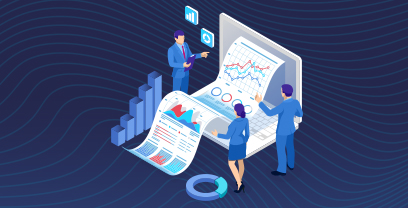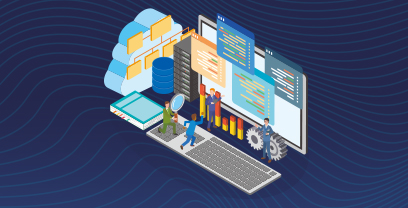If you work in procurement, you are likely to have come across the term “Source-to-Pay” or “S2P.” It is a way of managing the entire procurement process from identifying a need through to paying the supplier.
However, Source-to-Pay is more than just a series of processes!
It is a way to consistently deliver value for your business. In this blog post, we will define what Source-to-Pay is, provide examples of its benefits, and explain why it is essential for procurement professionals.
What is Source-to-Pay?
Source-to-Pay, often abbreviated as S2P in procurement, is an end-to-end process that includes all activities from sourcing goods and services to paying suppliers. It starts with understanding your spend, capturing buying needs, identifying the right suppliers for a need, creating a sourcing event, negotiating terms and contracting with them to receive goods and/or services, and lastly, processing invoices from suppliers and executing their payment. Throughout the S2P process there is also a need to manage supplier information and assess supplier risk and performance.
The ultimate goal of Source-to-Pay is to optimize procurement processes, minimize costs, and ensure that an organization receives the goods and services it needs in a timely and cost-effective manner while maintaining good supplier relationships.
What’s The Difference Between Source-To-Pay And Procure-To-Pay?
Source-to-Pay (S2P) encompasses Procure-to-Pay (P2P). S2P covers the complete set of procurement activities across both strategic and operational procurement activities, whereas procure-to-pay is focused more on operational activities. They both play essential roles in managing an organization’s purchasing activities, but they focus on different stages of the procurement cycle.
Source-to-Pay, often abbreviated as S2P, covers the complete set of procurement activities across strategic and operational procurement and encompasses everything from supplier selection, negotiation, contracting and relationship management, spend analysis and transactional procure-to-pay activities. S2P integrates all the various procurement processes and functions to set and execute procurement strategy to achieve cost savings, operational efficiency, business and user requirements and supplier lifecycle management.
Procure-to-Pay, often abbreviated as P2P, is the operational or transactional part of the procurement process that allows a business to efficiently procure goods and services from their suppliers and pay them. The process typically contains five steps (intake / request forms, purchase requisition, purchase order, receipt, invoice and payment) and several related approval workflows.
So, Source-to-Pay and Procure-to-Pay are not distinct processes but rather P2P is a subset of S2P.
The Seven Stages of the Source-to-Pay Process:
The Source-to-Pay (S2P) process typically consists of seven main stages:
- Spend Analysis: Understanding their spend is one of the first steps a Procurement organization goes through-as a determinant for: Who are you buying from, what are you buying, how much are you buying, what price are you buying at, is it on or off-contract, etc. This is also an ongoing activity.
- Supplier Management: The foundation of Source-to-Pay, supplier onboarding, information, risk, and performance management throughout the lifecycle of a supplier relationship. All parts of the S2P process are connected to the supplier in some way and it is essential that there is a 360 degree view and access to supplier data. This also includes additional activities such as improvement plans and overall supplier collaboration.
- Sourcing: This stage is based on data analysis which uncovers sourcing opportunities or requirements from the business for certain goods or services. . It includes activities such as supplier discovery, request for proposal (RFP) creation, analysis of supplier responses / quotes and selection of one or more suppliers.
- Contract Management: After Sourcing, comes the contract. This stage involves contract creation and authoring, negotiation of terms and conditions and final approval. This is where strategic and operational processes connect. The contract governs the relationship between the buyer and supplier, an essential process to inform Procure-to-Pay.
- Procurement: After sourcing and contracting is complete, the procurement stage begins. In this phase, internal stakeholders generate intake forms or purchase requisitions to request the goods or services they need or they access an internal ecommerce site with approved items for purchase. These requisitions are often subject to approval processes. Once approved, purchase orders are created and sent to suppliers to formalize the requests, specifying the quantity, price, and terms of purchase.
- Receiving and Invoicing: When the goods or services are received from the supplier, this stage involves checking that they meet the agreed-upon specifications and quantities. Invoices from the supplier are received and verified to ensure they match the purchase orders and the actual goods or services received. Any discrepancies and compliance requirements are addressed during this stage.
- Payment and Settlement: After the invoices are verified, payments are processed, and funds are transferred to the supplier based on the agreed-upon payment terms. This stage involves financial reconciliation and ensuring that invoices are paid accurately and on time.
These seven stages in the source-to-pay process help organizations manage their procurement activities efficiently, reduce costs, maintain supplier relationships, and ensure compliance with procurement policies and regulations.
Interested in expanding your knowledge of the source to pay process? Read our comprehensive “Source to Pay Guide” which examines the seven essential steps of the Source-to-Pay process.
Benefits of Source-to-Pay
Implementing Source-to-Pay (S2P) technology offers numerous benefits to organizations, helping them improve efficiency and achieve better visibility and control over spend management activities. Some of the key benefits of S2P automation include: cost savings, improved efficiency, supply assurance, risk mitigation, performance optimization and stronger supplier relationships.
Generating Value for Your Business
At Ivalua, we believe implementing spend management strategies across the complete Source-to-Pay process is the first step to creating value for your business.
One of the critical benefits of Source-to-Pay is that it provides better visibility and transparency across the entire procurement process. With complete spend analysis, you can identify where your money is going and find areas where you can reduce costs and improve efficiency.
Value is continuously generated throughout each stage of the S2P process:
- Identifying Value: Understanding all your spend and uncovering opportunities to deliver value.
- Creating Value: Effectively executing sourcing strategies and streamlining contracting.
- Capturing Value: A modern, compliant buying experience, automated invoicing, and embedded payments.
- Measuring Value: Monitoring purchase orders, contract information, risk, and supplier performance.
Improved Supplier Collaboration
The Source-to-Pay (S2P) process not only optimizes the procurement journey but also paves the way for enhanced collaboration between organizations and their suppliers. With so much supply disruption and volatility, strong and stable supplier relationships are priceless.
The degree of supplier collaboration each organization has with their supplier network varies, but since the pandemic hit, many have renewed their focus on building strong supplier relationships to improve their ability to identify potential issues early on, initiate collaboration with suppliers, and act to mitigate the risk of disruption to their business.
A recent survey conducted by McKinsey & Company titled “Taking Supplier Collaboration to the Next Level“, unveiled that ongoing collaboration between buyers and suppliers yields substantial advantages for both parties. Including a mutual competitive advantage, higher growth, lower operating costs, and greater profits than their industry peers.
This collaborative approach not only fosters a mutual competitive advantage but also fosters “higher growth, reduced operating costs, and superior profitability” when compared to industry peers. This strategic supplier collaboration is noted to be a vital driver of success in modern business dynamics.
Supplier collaboration capabilities built into Source-to-Pay software also allows for easier collaboration between buyers, planners and suppliers. Whether it is collaboration on an improvement plan, innovation plan or to resolve an invoicing dispute, access and visibility of S2P data, especially supplier information is important.
This allows for effective supplier management, accurate and up-to-date data on all supplier activity and allows for innovation, which can lead to process improvements, cost savings, and better quality products and services.
Improved Compliance & Supplier Risk Management
Procurement compliance is quite an extensive topic and encompasses all aspects of procurement, supply chain management, and vendor relationships, ensuring that they align with legal regulations, ethical guidelines, and risk management best practices.
Procurement managers are faced with numerous responsibilities, ranging from relationship management and risk mitigation to environmental and tax regulations. It is indeed a time consuming task to effectively monitor all factors that can potentially affect the company’s financial performance.
For example, the work of monitoring current contracts, preserving copies of previous contracts, evaluating contractual risk, and assuring terms compliance is enormous. Source-to-pay (S2P) software can play a significant role in ensuring purchases are compliant to contracts reducing the risks of undue penalties or fines.
Key points to consider for managing supplier risk:
- Supplier Risk Management: Identify and categorize potential supplier risks, which can include financial instability, geopolitical factors, natural disasters, quality control issues, and more.
- Supplier Evaluation: Assess and rate suppliers based on their risk profile, taking into account factors like financial health, reputation, past performance, and geographic location.
- Supplier Collaboration: Collaborate with suppliers to jointly address risks, improve performance and work together to find solutions and even innovate.
- Supplier Diversification: Consider diversifying your supplier base to reduce dependency on a single supplier and mitigate the risk of disruptions.
- Contractual Protections: Use well-structured contracts that include clauses for risk mitigation, such as penalty clauses, dispute resolution mechanisms, and contingency plans.
- Supply Chain Visibility: Improve visibility into your supply chain to better trace product movement and monitor potential risks.
- Data and Analytics: Utilize data and analytics to gain insights into supplier performance, supplier dependencies, and risks, helping in making informed decisions.
Source-to-Pay Process Automation
With so many interconnected processes across Source-to-Pay, having data and process siloes can be a significant barrier. Disconnected procurement processes and fragmented data cause unnecessary work. Having one seamlessly connected S2P platform eliminates a lot of pain points around data, visibility and workflows, freeing up your time to focus on more strategic initiatives.
Source-to-Pay Software provides a modern user experience that is consistent and connected across all S2P processes and data. With real-time supplier data feeding S2P activities and workflows that make business processes flow smoothly you can eliminate manual work and automate in a smart way to improve accuracy and efficiency.
There are strong tangible benefits for having an efficient, automated and connected source-to-pay process, including:
- Improve ability and speed to identify/capture savings
- Orchestration and visibility of all spend
- Better management of supplier relationships
- Visibility around supplier risk and performance
- Improved transactional process efficiency and automation
- Compliance controls where needed
- Higher quality of data around spend and suppliers
Summary
Embrace the game-changer that is Source-to-Pay (S2P) and revolutionize the way you bring value to your business. Dive deeper into the world of procurement and discover how S2P goes beyond mere processes. It empowers you to reduce costs, enhance compliance, foster supplier collaboration, and propel automation, ultimately achieving unparalleled outcomes for your business. Don’t settle for the ordinary – embrace S2P and unlock its transformative potential for your procurement success.
Ready to revolutionize your S2P process? Let’s get started below!
Generate Greater and More Sustainable Value Across Your S2P Process




